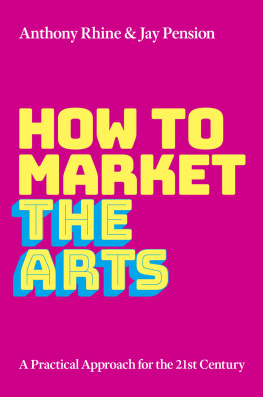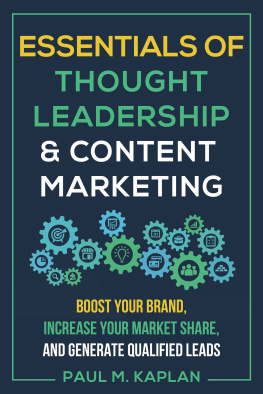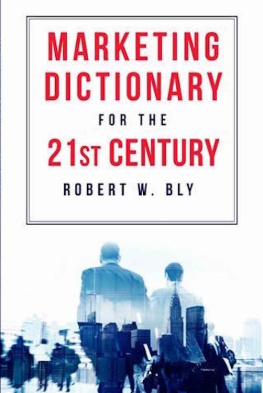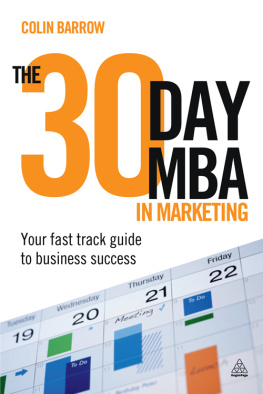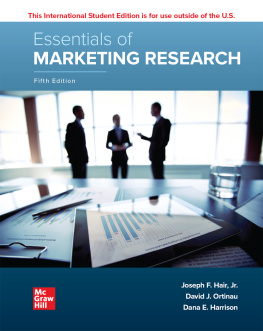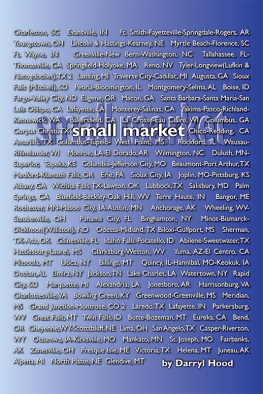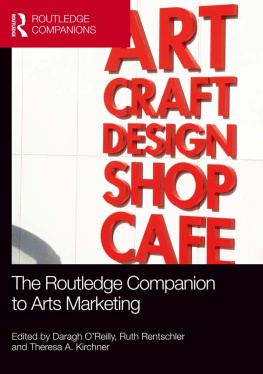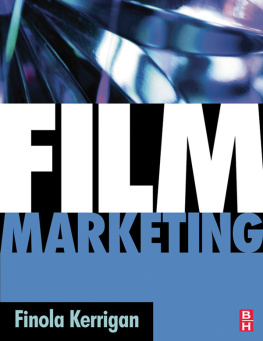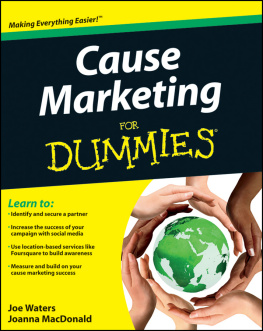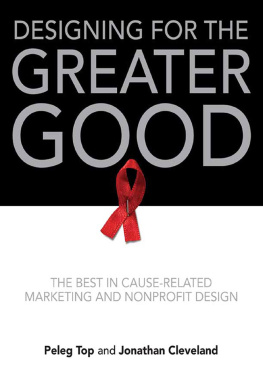How to Market the Arts

Oxford University Press is a department of the University of Oxford. It furthers the Universitys objective of excellence in research, scholarship, and education by publishing worldwide. Oxford is a registered trade mark of Oxford University Press in the UK and certain other countries.
Published in the United States of America by Oxford University Press
198 Madison Avenue, New York, NY 10016, United States of America.
Oxford University Press 2022
All rights reserved. No part of this publication may be reproduced, stored in a retrieval system, or transmitted, in any form or by any means, without the prior permission in writing of Oxford University Press, or as expressly permitted by law, by license, or under terms agreed with the appropriate reproduction rights organization. Inquiries concerning reproduction outside the scope of the above should be sent to the Rights Department, Oxford University Press, at the address above.
You must not circulate this work in any other form and you must impose this same condition on any acquirer.
Library of Congress Cataloging-in-Publication Data
Names: Rhine, Anthony, author. | Pension, Jay, 1987 author.
Title: How to market the arts : a practical approach for the 21st century /
by Anthony Rhine and Jay Pension.
Description: New York : Oxford University Press, [2022] |
Includes bibliographical references and index.
Identifiers: LCCN 2022018872 (print) | LCCN 2022018873 (ebook) |
ISBN 9780197556085 (paperback) | ISBN 9780197556078 (hardback) |
ISBN 9780197556108 (epub) | ISBN 9780197556092 | ISBN 9780197556115
Subjects: LCSH: ArtsMarketing.
Classification: LCC NX634 .R485 2022 (print) | LCC NX634 (ebook) |
DDC 700.68/8dc23/eng/20220623
LC record available at https://lccn.loc.gov/2022018872
LC ebook record available at https://lccn.loc.gov/2022018873
DOI: 10.1093/oso/9780197556078.001.0001
Contents
Several years ago, a student asked this question: If the marketing mix is so effective, why do so many nonprofit arts organizations struggle to keep their doors open? It is a simple question, with answers so complex and convoluted that they can hardly be answered without an entire treatise on the topic. The first obvious answer was that all those nonprofit arts organizations are not following the marketing mix correctly. This is a simple answer and makes it easy to blame the arts organizations. The situation, however, is far more complex and intricate than the simple answer reveals. Many nonprofit arts organizations cannot precisely follow the basic tenets of the marketing mix because they are not designed to work with nonprofit arts organizations. It is a tricky situation that bore the thinking behind this book.
Though many books may be written in isolation, this one has not been. We have had such tremendous support from many people and are grateful to them all.
Though we originally intended to write an academic manuscript focused entirely on theory, our publisher saw the need in the marketplace of practitioners, so we revised our tone and structure and developed something that would provide nonprofit arts organizations a new approach to connecting with their communities. We would like to thank Norm Hirschy of Oxford University Press for his guidance, support, and kindness as we developed a way to communicate this new approach for nonprofit arts organizations.
Of particular note are those who helped keep the writing process going smoothly. Sam Stenecker provided detailing work for the manuscripts, helped us keep the flow moving nicely, and provided a third set of eyes when ours were growing bleary. Katelyn Woods provided some much-needed visuals, without which the engagement edge would be simply a collection of words.
We are particularly grateful to all those who provided interviews and information for the cases in the book. We felt it vitally important that we were able to demonstrate some examples of elements of the engagement edge in action. In some forms, many arts organizations are practicing it now. Whether cited by name or assigned a moniker for anonymity, those who participated in the case studies, have helped make this book work as intended.
Mary Beth Vanko has, as she has done many times, made this a book that is readable and worthwhile. She is more than an assistant and editor; she is a lover of the arts and their impact on our communities. Her passion for the arts coupled with her immense talent at making our words and concepts read appropriately, is unrivaled, and it shows in her work. We are both forever grateful for this enormous talent that she shares with us and with you.
We would also like to thank our colleagues at Florida State University: Pat Villeneuve, Antonio Cuyler, and Ann Rowson-Love, all of whom inspire us to be our best.
Jay would like to personally thank his family and Charlotte for their consistent support and encouragement both through the years and as he developed this book with Anthony. He would also like to thank the PhD Arts Administration and MFA Theatre Management programs at Florida State University.
Anthony would be remiss if he did not mention Joel Senft, who supports the process of book writing every time it is undertaken, with ease and aplomb. He is the perfect person to apply a little pressure when the writing schedule is getting slack, and just as good showing support when the schedule is tense.
To all these individuals, and the many, many others who have contributed to the process of getting this book published, we are grateful.
Anthony and Jay
This book stems from a collection of ideas we saw with increasing frequency in academic literature, international conferences, and trade publications. At the center was the idea of engagement. We also saw a renewed interest in the idea of experience. Relative, academic discourse included ideas connected to the concept of environment. These concepts all seemed to appear consistently, sometimes in conjunction with each other, and at other times, as new approaches to their function. There was no doubt that in the academic world of arts administration and cultural management, researchers in every niche, from marketing to social justice to fundraising to education, kept responding to the same themes. We felt that these disparate theories had to be cohesively told and placed against McCarthys marketing mix developed in the 1950s.
When Ben Walmsley wrote that it was time for someone to consider an alternative for the Ps in marketing (product, price, place, and promotion), it was as if he had read our thoughts. We had been exploring this idea that the four Ps of the marketing mix did not fit the nonprofit arts well, if at all. We had no claim, however, on any academic approach that developed and plotted a new theory to replace marketing. We only knew that engagement, environment, and experience were all involved, and they all started with E.
So, we fretted, and still do, to some extent, that it will be argued that we have put forth an idea that allows the nonprofit arts to approach marketing differently for the world we live in, simply through semantic changes in the four Ps that make up the marketing mix.
This book is titled How to Market the Arts: A Practical Approach for the 21st Century because we have chosen to make it clear to the practitioner that this is not a replacement for marketing, but an

